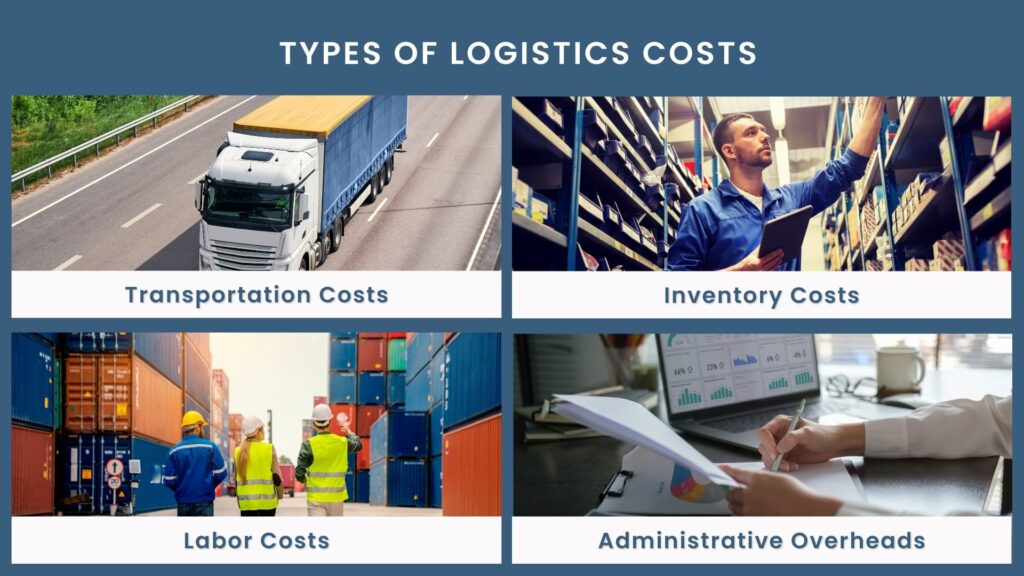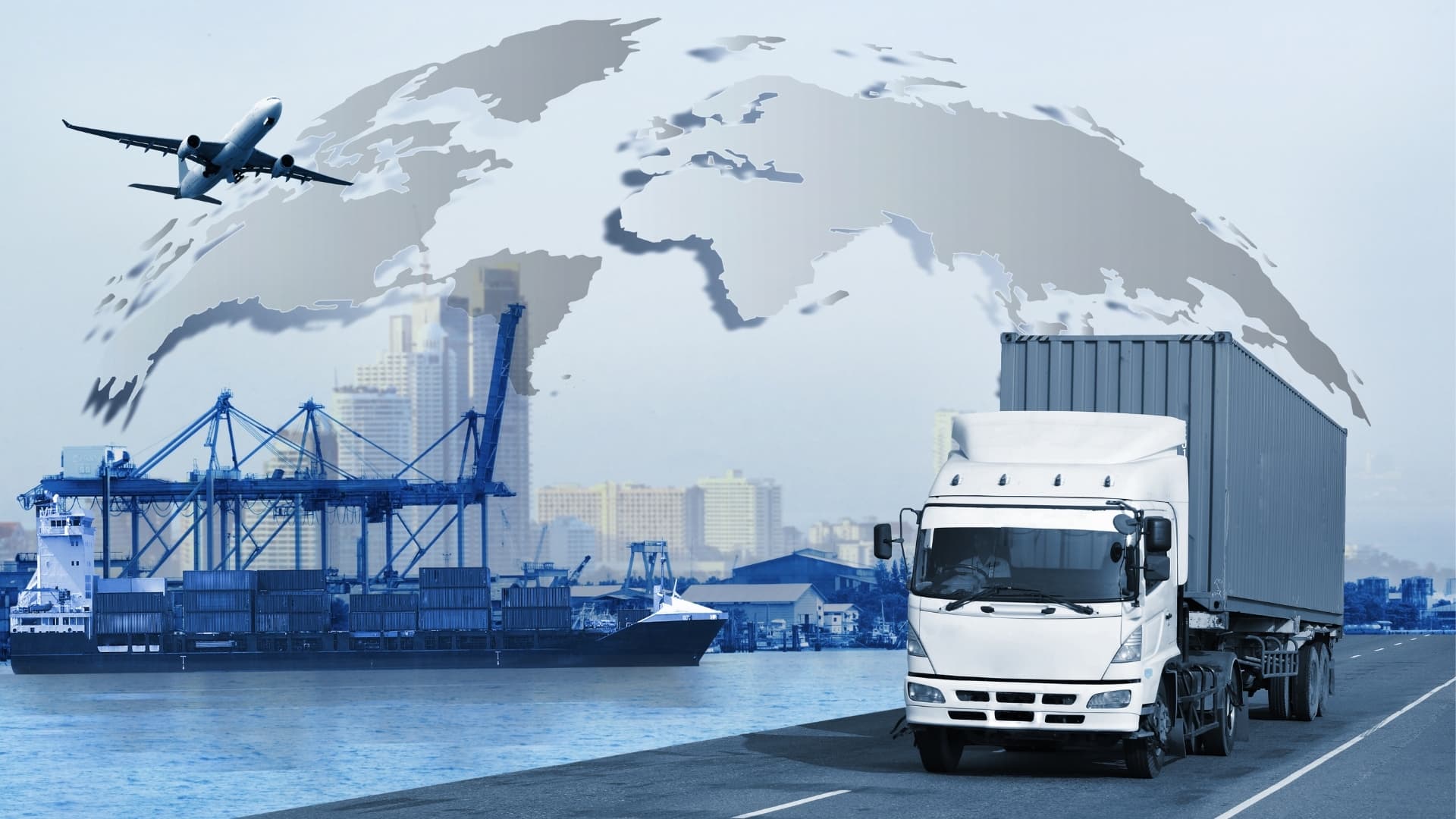Logistics cost reduction involves the various activities and measures implemented by organizations in an effort to lower the costs incurred in the process of moving and handling goods through the supply chain. The focus is not only about making savings but also improving the operations of the organization. This requires balancing numerous aspects of the supply chain, such as transportation systems, warehouses, stocks, and deliveries.
Types of Logistics Costs

Logistics costs include various expenses essential for supply chain operations:
- Transportation Costs: This includes fuel costs for transporting goods, toll fees, and shipping costs
- Inventory Costs: The expenses incurred in the storage and management of stock such as cost for rent of warehouse, insurance and electricity among others
- Labor Costs: Cost of employing people tasked with the responsibility of overseeing and executing the logistics services
- Administrative Overheads: Rent, utilities, computer & software expenses, and legal fees that are associated with the running of an office
The Necessity of Cutting Logistics Expenses
Logistics costs should be optimized for long-term profitability. It enhances organizational profitability, competitive advantage, customer satisfaction, and can sometimes even be an environmental driver. Here are the key reasons why cutting logistic expenses seems as a necessity:
- Boost Profitability: Logistic costs are sometimes a major cost factor for a company and include such activities as transportation, warehousing, inventory control and order fulfillment. Thus, companies are ready to actively reduce logistics costs for the improvement of the balance sheet. Reduced logistic costs leads to improved profits since more of the revenue earned is not utilized to cater for the costs of operations. This is important for the wealth creation and the overall prosperity of an individual or organization.
- Enhance Competitiveness: In the current world business environment, any opportunity to cut costs can be a crucial point. Cutting on the logistics costs makes it possible for the companies to bring the prices down, which affects customers’ purchases. Furthermore, these savings may be utilized to finance new product development, advertising, or enhanced customer relations, which may allow companies to gain a strategic edge.
- Improve Customer Satisfaction: In their orders, customers always expect quick and effective delivery services. Reducing the expenses involved in the logistics functions benefits businesses not only financially but also through enhanced service delivery. Efficient operations also ensure timely and accurate deliveries, which increases customer satisfaction and their willingness to revisit and bring in others.
- Minimize Environmental Impact: Transportation and storage, being the major operational processes in logistics, are sources of environmental pollution by fuel consumption and discharge of emitting gases and waste. Coordination of supply chain operations can help in minimizing these effects. For instance, better routes in transport will reduce fuel consumption, and consequently emissions, while effective stock management reduces excess stock disposal.
Farm to Plate’s Approach to Logistics Cost Reduction

Farm to Plate’s three unique offerings — Trace, Track, Trade are designed to mitigate logistics cost in several spheres, increase accountability and profitability. Here’s how:
- Trace: Farm to Plate’s Trace makes supply chain management more transparent and effective. It enables businesses to deal effectively with product recall issues, control shrinkage and keep their processes compliant. Trace offers a way to monitor the situation in real-time and can assist a company in responding quickly to recalls, understanding which products are involved, and preserving trust with the consumers. With a view of tracing the path taken by products from the manufacturer to the consumer, Trace enlightens the public hence enhancing compliance with food safety laws.
- Track: The Track module helps to streamline inventory processes, purchasing, and pre-selling operations. By providing real time stock visibility, Track forges an efficient supply chain for businesses leading to zero wastage and frequent stock-outs. It also helps to organize the purchase since it consolidates supplier information and rates. Also, Track enables presell co-ordination by aligning the order and delivery status to improve the overall customer satisfaction.
- Trade: Farm to Plate’s Trade module shows how to manage deduction reconciliation, which can be quite a challenge. It simplifies reconciliation workflows and eliminates some level of manual errors within the workflow. Trade facilitates the management of many deductions at once, which in turn improves the accuracy of records and cash flow. Through the automation of these processes, Trade improves financial activities and boosts profits.
Strategies for Reducing Logistics Costs
Here are the most effective strategies for an efficient logistic cost reduction:
- Optimize Transportation: Select cost-efficient transportation modes and incorporate route optimization systems to determine the best way of delivering products
- Consolidate Shipments: Instead of making frequent small shipments, consolidate small shipments into one big shipment to help lower the cost of transportation per unit
- Improve Warehouse Efficiency: Implement the just-in-time inventory system and use demand estimates to minimize idle inventory stock and related costs
- Negotiate with Suppliers: Negotiate for better prices, especially for buying in large quantities or paying before the actual time
- Implement Technology Solutions: Implement logistics software, IoT devices, and RFID systems as tools for current status tracking and enhanced supply chain transparency
- Reduce Packaging Costs: Utilize packaging that is lighter in weight and occupies minimal volume and consider the use of environmentally sensitive packaging
- Optimize Order Processing: Having basic but efficient systems will prevent delays and errors in processing of orders for your products
Final Words
Logistics cost cutting does not always involve money, but it is the right approach to making a company’s supply chain cleaner, more adaptable, and more error-tolerant. Through the products of Farm to Plate, namely Trace, Track, and Trade, companies can solve some of the significant concerns in logistics such as traceability, stock tracking, and balance sheet management. Subsequently, these tools not only enable an organization to save cost but also improve operational reliability and eco-efficiency. Implementing the best strategies towards control of logistics cost will help your business to succeed in a competitive and globally sustainable society.
FAQs
1. What is meant by logistics cost reduction?
Supply chain logistics cost-saving includes measures that focus on cutting costs associated with moving and handling goods through the supply chain with an objective of achieving higher profitability.
2. How can Farm to Plate’s Trace assist in reducing the cost?
Trace improves on cost savings by providing increased clarity on various items; handling of recalls; fight against spoilage or shrinkage of inventory; and compliance to food safety laws.
3. What advantages does Farm to Plate’s Track module provide?
The Track module enables near real-time inventory management, simplified sourcing, and presell coordination, which leads to lower wastage, appropriate stock holding, and overall operational productivity.
4. What are the issues that can arise when cutting logistics expenses?
As with any approach to supply chain management, there are issues that entail a complex logistics operation, difficulty in determining the cost that should be assigned to each product, resistance from employees, short-term thinking, and high initial cost to improved systems or processes.
Tanya A Mishra, Technical Content Writer & Marketer at farmtoplate.io (specialising in MENA Tech Landscape). She has been working towards crafting insightful content on topics like Blockchain, Agritech, AI and many more.
